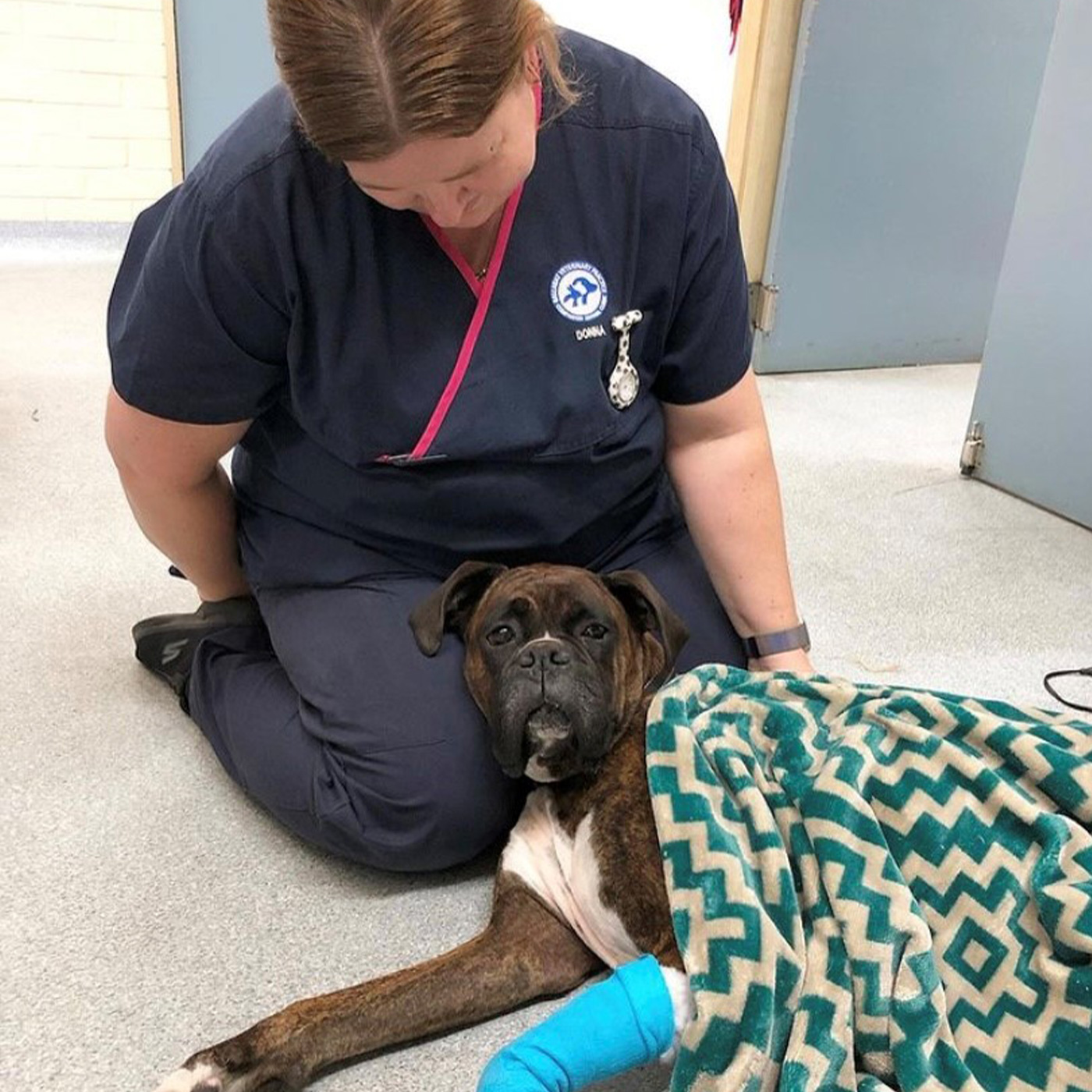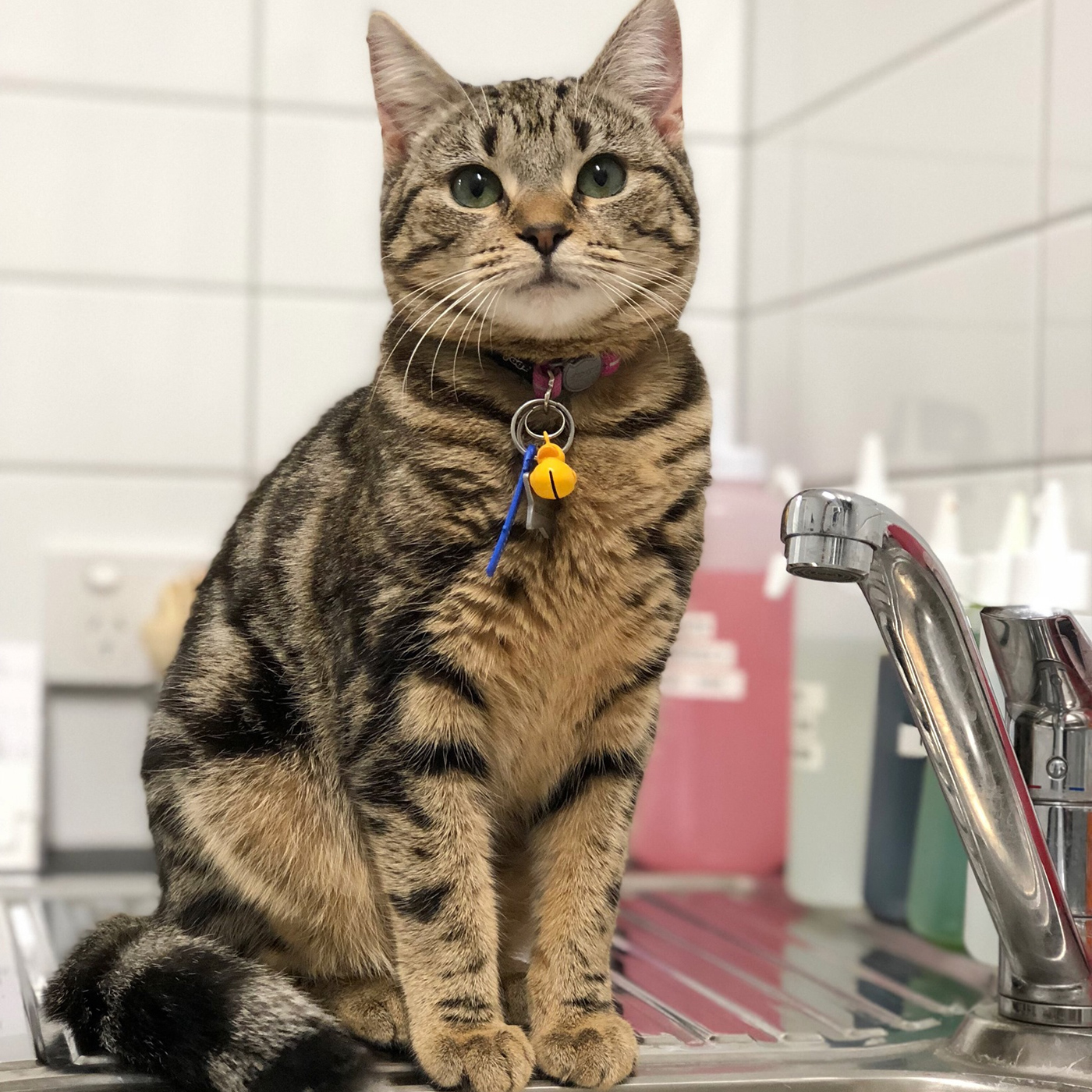Vet Surgery Services

Our modern, well-equipped hospital, experience and training, enable us to provide everything from routine desexing, wound repair and caesareans through to cruciate surgery, complex orthopaedic procedures such as TPLO and emergency abdominal surgery.
Routine surgical services are offered at each of our clinics. More complex orthopaedic procedures are generally performed at our Sturt Street Practice.
With most procedures being able to be performed here in Ballarat, our clients are able to access comprehensive health care for their pets without the inconvenience and stress of having to transport their pet to Melbourne for surgery and associated follow up appointments.
BVP Anaesthesia / Surgery Protocol
Most animals are admitted to hospital on the morning of the day of their procedure. On admission, you will be greeted by a member of our Team who will confirm your pet’s details and discuss any questions that you may have about your pet’s procedure. A physical examination will be conducted as part of the admission process and all admission paperwork will be completed. Please allow at least 15-30 minutes for your pet’s admission so that this process can be completed thoroughly.
Intravenous fluid therapy is standard protocol for all patients admitted for procedures requiring an anaesthetic at any of our Clinics. This has been shown to improve patient outcomes and facilitate improved recovery times. Pre-anaesthetic blood tests are also offered.
Additionally, all surgery and dentistry patients are given pre-operative pain relief to ensure that they are as comfortable as possible after their procedure. Each pet will be assessed by our team at discharge to determine if further pain relief medication is necessary.
During your pet’s procedure, a designated member of our nursing team will be vigilantly monitoring your pet’s anaesthetic throughout. Constant measuring and recording of blood pressure, respiratory and heart rate as well as temperature and anaesthetic depth help to ensure that your pet has the safest anaesthetic possible.
Intravenous fluid therapy not only supports your pets’ blood pressure throughout surgery, it also ensures that we have intravenous access for the administration of lifesaving medication in the event of an emergency.
At the completion of the procedure, your pet’s recovery is again closely monitored by our highly experienced nursing team to ensure optimal safety during this critical period.
Once your pet is fully awake, they will be offered a small meal and monitored closely until discharge. Most routine surgeries are discharged mid to late afternoon on the day of admission. Critical care patients, and those having more complex procedures may require additional time in hospital so that they can be stabilized prior to discharge.
Whilst all anaesthetics carry some degree of risk, experience, training and a dedicated team caring for your pet at each stage from admission to discharge allows us to take every precaution possible. This not only serves to minimise the risk of anaesthesia; it also ensures that your pet receives the very best care available.
Upon discharge, all post op care instructions and medications will be discussed. Follow up appointments will also be scheduled to ensure your pet returns to their best health as quickly as possible.
Desexing

A cornerstone of responsible pet ownership is desexing.
Desexing prevents oestrus (coming into season), unwanted pregnancies and behavioral problems, reduces the incidence of disease and has major benefits for your pet’s longevity and quality of life.
Desexing procedure
Juvenile desexing is a routine, low risk procedure and is usually able to be performed on a day patient basis.
Ideally most pets are desexed at around 6 months of age before they reach sexual maturity. Interestingly desexing prior to puberty has no effect on weight gain, daily food consumption or activity levels when compared to desexing after puberty.
If you own a large breed dog, it is best to discuss the timing of desexing with one of our veterinarians as there are some considerations to be taken into account when it comes to the ideal time for the desexing of such pets. There are some implications for the age of desexing and the incidence of cruciate disease in large breed dogs.
At our clinics we offer desexing for all domestic pets from dogs and cats through to ferrets, rodents, rabbits and guinea pigs.
Cruciate Disease
Treatment
The treatment of cruciate disease aims to restore stability to the stifle joint and thereby reduce the risk of further damage to structures within the joint. Improved stability reduces joint inflammation induced by abnormal joint biomechanics and helps to slow the rate of progression of osteoarthritis.
The best surgical approach to the correction of stifle instability resulting from cruciate disease is determined by each patient. The ideal surgical plan is tailored according to the size and temperament of your dog, concurrent pathology in the stifle joint and the ability to complete post-operative management and rehabilitation.
At the Ballarat Veterinary Practice, we recommend and perform Tibial Plateau Levelling Osteotomy (TPLO) as the treatment of choice for the repair of cranial cruciate injury in dogs provided that the caudal cruciate ligament is not compromised.
In some patients we may recommend an alternative extracapsular techniques. These procedures may be suitable for our smaller patients provided that appropriate aftercare can be implemented.
Tibial Plateau Leveling Osteotomy (TPLO)
This advanced orthopaedic procedure alters the direction of the forces acting on the stifle during weightbearing so that the caudal cruciate ligament takes on a greater role in stabilising the joint. By changing the angle of the articular surface of the tibia, weightbearing forces which would normally be stabilized by the cranial cruciate ligament are transferred to the caudal cruciate ligament instead. In this way, the caudal cruciate ligament is employed to restore stability and function to the stifle.
Extracapsular Repair
Extracapsular repair aims to mimic the stabilising action of the cranial cruciate ligament by counteracting the forces on the stifle that are generated by the weight bearing limb.
Extracapsular repair involves careful placement of specially designed suture material to provide support and stabilization of the stifle joint and limit the instability and abnormal range of motion that results from a non-functioning cranial cruciate ligament.
Fracture Repair and Management

From external fixation to bone plating no two fracture repairs are the same.
With careful diagnostics and surgical planning, the best approach for your pet can be designed. With excellent aftercare and management, most patients make an excellent recovery and exhibit an incredible level of resilience throughout.
Post-operative care often involves a prolonged period of restricted exercise and this is often one of the biggest challenges to a successful surgical outcome. With excellent pain management, many patients are inclined to be too active, too early post-surgery. Confinement can be a challenge (especially in young active pets) but is definitely the key to a speedy, complication free recovery from any orthopaedic procedure.
Caesarian Section
The goal of a caesarian is to remove all foetus’ from the pregnant bitch as quickly and as safely as possible to reduce the risk to the life of the bitch and her pups alike.
When a bitch is unable to safely deliver her pups on her own, this is known as dystocia. Dystocia may be due to a malpositioned, oversized or maldeveloped pup. A small pelvic canal, or uterine inertia in the bitch may also warrant surgical intervention to safely deliver live pups and minimize the risk to the bitch.
In other instances, a caesarian will be recommended whenever a bitch has been in active labour but has not produced a puppy after 30 minutes, or where there is any evidence of obstruction, foetal malformation or malposition. Additionally, a caesarian will also be recommended if there has been no response to any medical intervention that may have been deemed appropriate for the presentation.
Only 30-40% of bitches with dystocia are successfully managed with medical treatment alone. Sometimes it is best to proceed directly to a caesarian.
Caesarians are often scheduled electively for small breeds and brachycephalic breeds. Ideally theses caesarians are performed 63-65 days after a LH urge or when late gestational serum progesterone concentration is less that 2ng/mml.
At the time of caesarian an ovariohysterectomy can also be safely be performed if no further breeding is desired.
Upon delivery, the pups will be resuscitated which involves the clearing of fluid from their nasal passages and oral cavity with suction, controlled vigorous rubbing and oxygenation until spontaneous breathing begins. Once the pups are warm and dry, breathing on their own and vocalizing, they will be ready for their first feed.
Post operatively once the bitch has recovered from her anaesthetic and safely nursing her pups she will be able to be discharged. Close monitoring at home to ensure a healthy maternal bond and the absence of uterine hemorrhage are important post discharge.
For any enquiries about our small animal vet surgery services that we offer at Ballarat Veterinary Clinic, feel free to contact us.
Pet Emergency?
If you have an AFTER HOURS EMERGENCY between the hours of 6pm and 8am only please call us at this number.
Companion Animal Emergency Number
